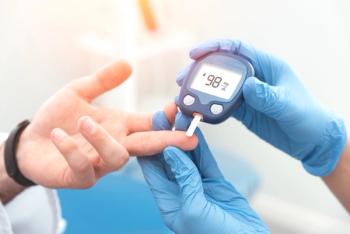
Impact of SNAP on food spending
For low-income families, securing an adequate supply of nutritious foods can be a challenge. There are public programs to help supplement grocery budgets, such as the Supplemental Nutrition Assistance Program (SNAP) but do these help needy families improve their overall nutrition?
A
The Supplemental Nutrition Assistance Program is a federally funded program that helps low-income families with food expenses at home. The program is administered by individual states, and about 14 million households received SNAP benefits in 2018, according to the US Census Bureau.2
Previous reports have shown a positive relationship between SNAP participation, and at-home food spending. However, what research hasn’t shown is how this is affected by food pricing in difference areas.
The new study investigated more than 2500 SNAP and non-SNAP households whose cash income was at or below 185% of the Federal Poverty Level. According to the US Census Bureau, SNAP participation requires household incomes to be below a certain threshold, and benefits then depend on the size, income, and demographic of the household. The average monthly SNAP benefit in 2018 was $251, the census bureau reports. About half of all SNAP households include at least 1 child aged younger than 18 years and a third of those households included a person aged 60 years or older.
The median household income for SNAP families in 2018 was $61,937 per year, according to the US Census Bureau, with the highest levels of SNAP participation in New Mexico and West Virginia. About 13% of the nation’s SNAP households are below the poverty limit. Additionally, most SNAP households are white rather than minorities—with 76% of households being white; 13.5 being Hispanic or Latino; 12.4 being black alone; and less than 5% Asian. Eligibility for SNAP is a bit more generous when disabilities are involved, according to the report, noting that about a quarter of all SNAP participants have at least one person with disabilities in the household.
Researchers compared spending on food at home to maximum SNAP benefits based on household size alongside consumer price indexes. The result was a positive spending difference between SNAP and non-SNAP spending on average.
Households that had a lower household income and higher SNAP participation had spending relative to maximum SNAP benefits that was 29 to 30 percentage points more than low-income, non-SNAP households. These trends were similar in areas with varying price indexes.
The research team concluded that families enrolled in the SNAP program spent more overall on food at home than non-SNAP, low-income families. More research is needed to understand how SNAP participation can help improve food security and overall health outcomes, the report notes.
Reference
1. Ismail M, Ver Ploeg M, Chomitz V, Wilde P. Differences in food-at-home spending for SNAP and non-SNAP households given geographic price variation. J Acad Nutr Diet. 2020;120(7):1142-1150.e12. doi:10.1016/j.jand.2019.12.017
2. Loveless T. Supplemental Nutrition Assistance Program (SNAP) Receipt for Households: 2018. Census.gov. Published June 1, 2020. Accessed September 21, 2020.
Newsletter
Access practical, evidence-based guidance to support better care for our youngest patients. Join our email list for the latest clinical updates.









